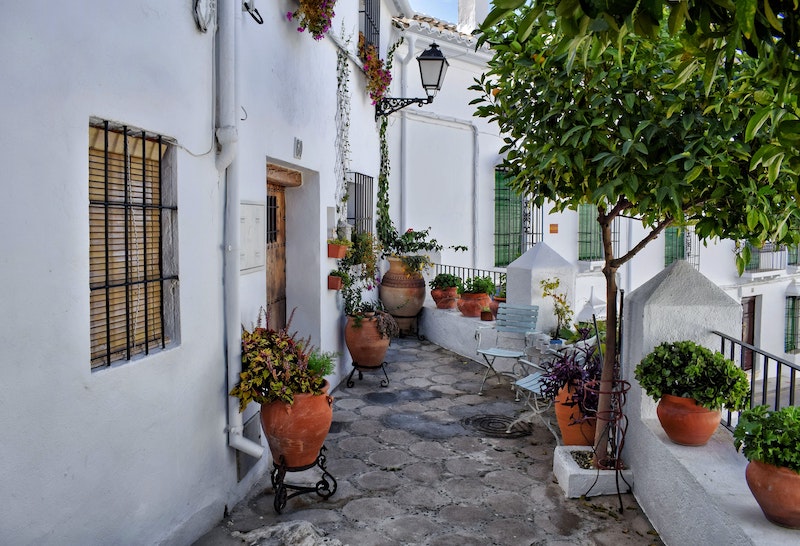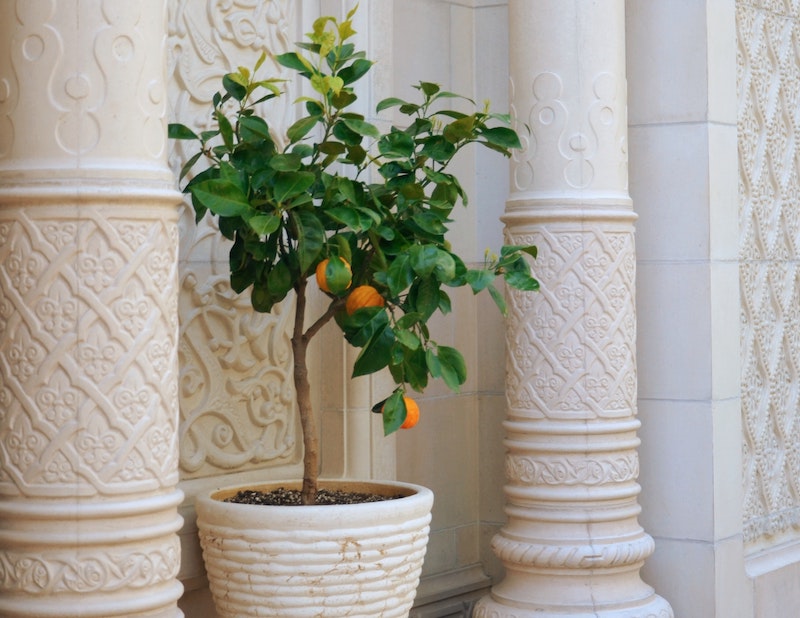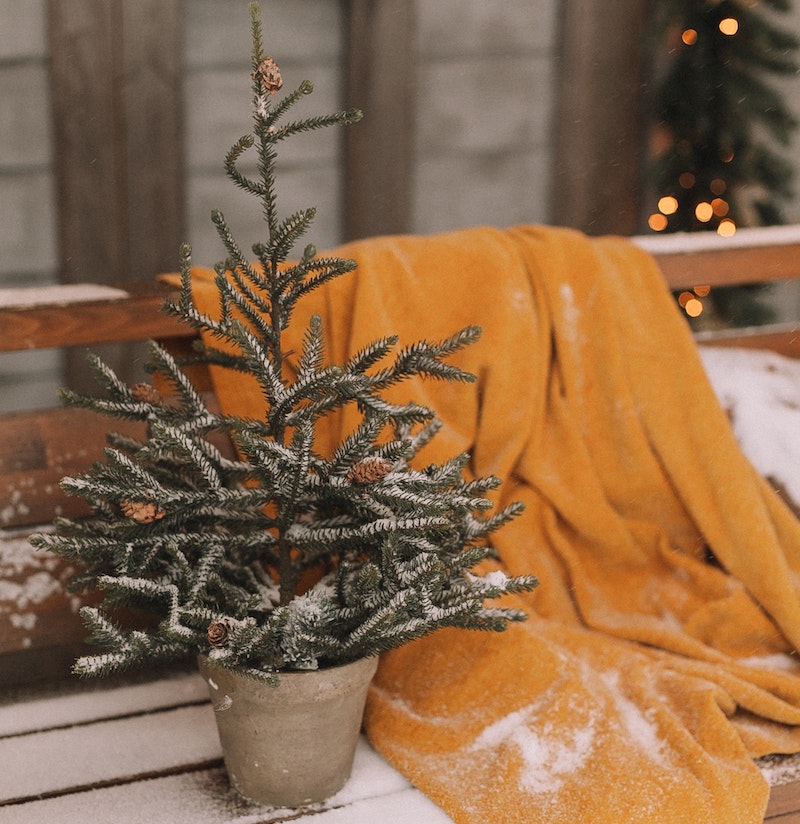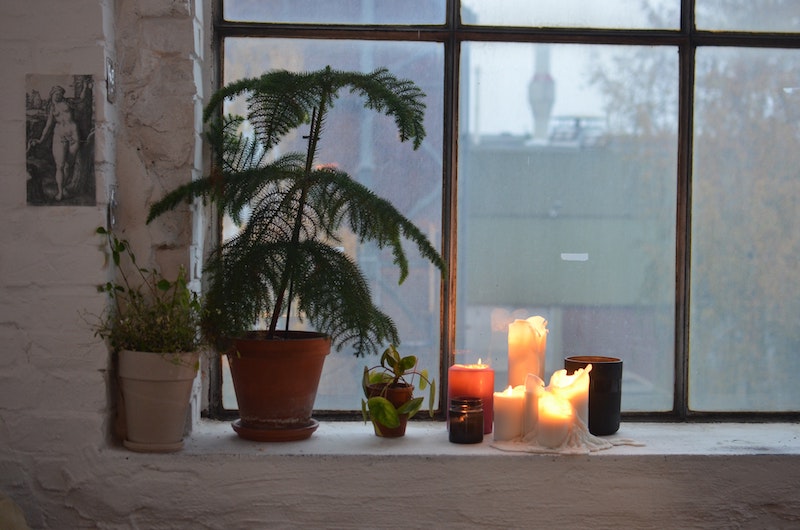Growing trees in containers is a great way to add height, interest, and shade to a small garden, deck, or patio. The list of eligible trees is long, with virtually any tree under 8 feet tall being a candidate for containers. Citrus trees, palm trees, dwarf conifer, and broadleaf evergreens are great options. As long as the container you have is large enough to counteract the heaviness of the mature top growth, a container-grown tree can thrive for many years.

Selecting a Tree and Pot
The best time of year to plant in containers is early in the spring. If you will be growing a tree considered tender in your climate, wait until the nighttime temperature is above 50 degrees F before potting it or bringing it out of the house from the winter. Choose a tree that is rated hardy to at least two zones lower (colder) than your location because containers offer less protection for the tree roots than in the ground. Research your tree's growing needs and ensure that it will be placed in enough sun or shade as required. Slow-growing trees will be happier in a container longer than a fast-growing tree.
Planters for trees should be large from the start, as the root ball of a tree is always at least 1.5 times the diameter of its canopy. The container should be several inches wider than the root ball, with a large depth for taller trees. The root ball will increase in size with time, just as the tree does. The bigger the container, the longer the tree will be able to stay there before needing to be repotted, and the extra space for potting soil will provide more protection from the cold and heat.
Weatherproof pots made of resin or plastic are lightweight and last for much longer than ceramic in climates with harsh winters if the tree remains outside throughout the year. Ensure the bottom of the pot has excellent drainage. Here is a link to some beautiful tree friendly planters. As the tree grows and needs more room, you may wish to transplant it into your yard and replace it with a new tree in the pot.
Planting Trees in Pots
Fill the planter with a potting mix. Be sure not to add too much, as the top of the root ball should sit at the same depth it was previously planted while allowing space at the top of the planter for watering. Release the tree from the nursery pot, burlap, or whatever is keeping the roots contained. Gently tease the roots if they’re in soil to release them and help them branch out into the new soil, rather than continuing to spiral in their existing shape. Do this on the sides and bottom of the root ball. Next you can put the tree into the new container, making sure the depth is sufficient, just a few inches lower than the rim of the pot.
With your chosen potting material, fill the sides between the root ball and the edge of the pot. Tamp down the soil to eliminate any air pockets. Empty air pockets can cause the roots to dry out and die in those spaces. Leave the root flare mostly uncovered. Those uppermost roots should still be visible on top of, or just under, the surface. Water the tree well, slowly and deeply. Set the pot on pot feet or bricks so the drainage holes aren’t blocked by the ground or floor.
Loosely stake the tree if it is leaning, by pushing the stake into the soil and securing the tree to the stake. Staking will help a young tree to grow straight and offer additional protection from bending or breaking in the wind, or during heavy rains or even snow. Long-term staking can weaken root development, so make sure to remove the stake after one year of growing.
Best Soil For Trees in Pots
Standard bagged potting mix that is soil based is fine for most trees in containers. Use soil designed for acid-loving plants if growing conifers or broad-leafed trees. Adding perlite will help keep the mix lightweight and free draining. Garden soil is not a good medium for use in containers. It doesn’t drain well, and you may be introducing weed seeds, insects and/or their eggs, or diseases into the planter.
Lightly mulch the surface of the soil to keep the soil moist longer, reducing the need for watering, especially during the summer. Use 1-2 inches of finely shredded bark or arborist chips, keeping it away from the tree trunk and root flare.
Caring For Trees in Planters
Trees growing in planters require more maintenance than those growing in the ground. The gardener has to periodically replace nutrients in the soil leached out through regular watering. Regular watering is required since the roots are confined to a pot and unable to search for moisture on their own. Potted trees are also more susceptible to damage from cold weather and drying winds, and may require extra protection in winter.

Watering Trees in Pots
Trees in pots will be in larger containers than most plants. Larger containers tend to dry out much slower than smaller ones, even in summer. The amount of water needed to keep a tree thriving is an easy calculation, and it increases each year as the tree increases. Allow 1 inch of water per inch diameter of the tree's trunk. So if the tree is 2 inches in diameter, it will require about 2 inches of water a week to thrive. The top 4-6 inches of soil can be allowed to dry out in between waterings.
Fertilizing Trees in Pots
Fertilizing is not often needed for trees growing in the ground because the roots can seek nutrients in an almost endless area. Trees in pots have a limited supply of nutrients that are leached out of the soil every time the tree is watered. Apply an extended-release, balanced fertilizer early in the spring to supply nutrients to the soil all season. Sprinkle it on the soil and water it in well, making sure to keep the dry fertilizer off of the foliage.
Winter Care For Trees in Pots
Trees suitable for your growing zone and climate should survive your winter climate. If the container is in an exposed location, such as a rooftop or windy hillside garden, extra care may be needed to insulate the roots or protect the branches from drying winds. Often growing plants that are one to two zones hardier than your USDA growing zone is the easiest solution for exposed gardens. Wrapping the containers in burlap or horticultural fabric also insulates the pot and the root system of the tree.

Growing Trees Indoors
Trees considered tender for your climate (think citrus, palms, or other tropical trees) may need to be brought into a frost-free or warmer spot for the winter. Many tropical trees can be grown as houseplants that take summer vacations. Ensure that any indoor tree is brought inside before nighttime temperatures fall to 50 degrees F. Try to provide as much sunlight as possible while the tree grows indoors.

 Author Robbin Small - Published 01-14-2023 Author Robbin Small - Published 01-14-2023 |
